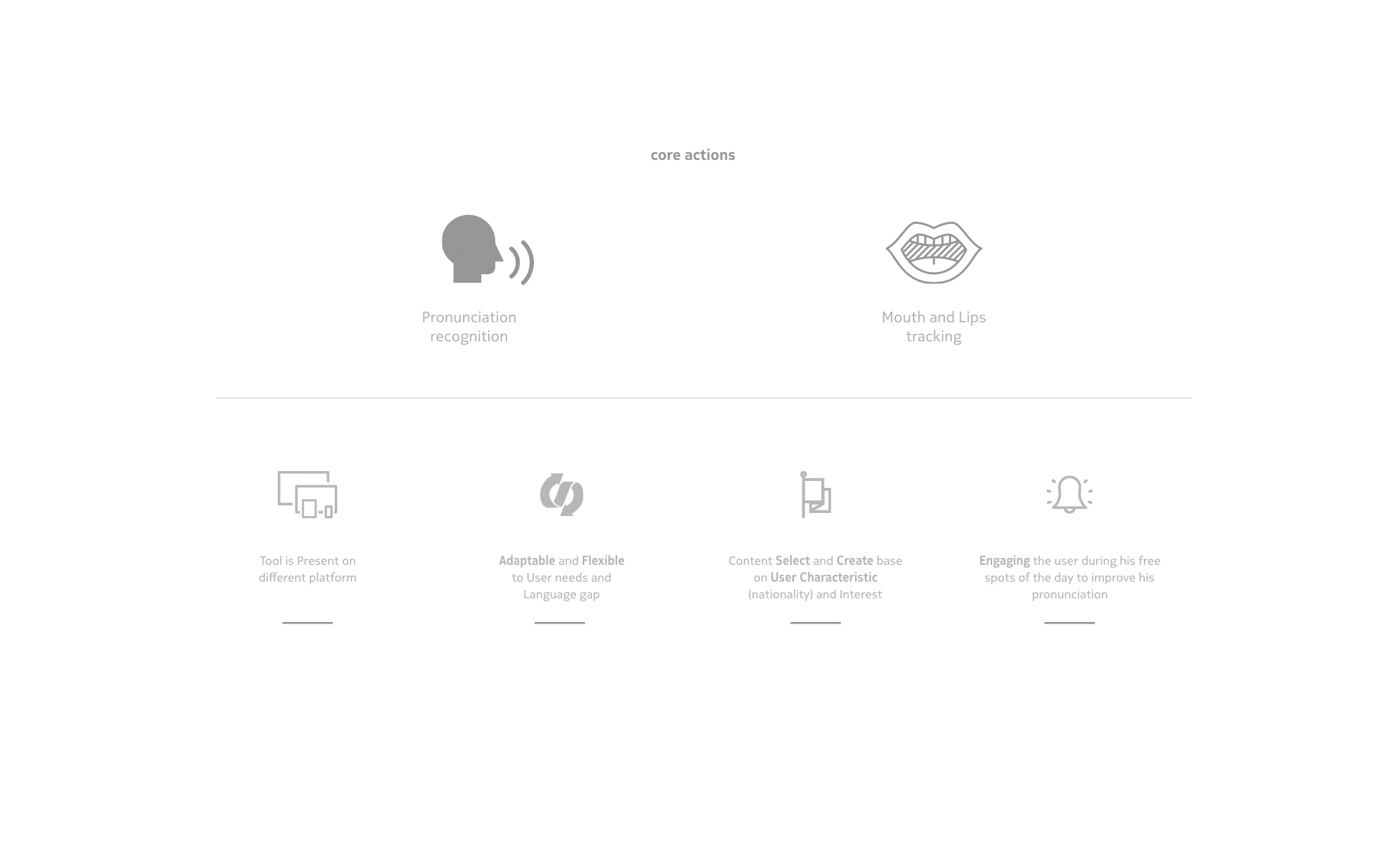
Date: 2016
In every language, some words are very hard for some people to pronounce even though they’re not too long or challenging for native speakers. It has a lot to do with accent and the origin of the person trying to pronounce the word. This means the words hard to pronounce for some people are different compared to others, and everyone needs a different approach to learning.
How to let the user practice their pronunciation?
1. Learn to listen. 2. Learn how to move their mouth and lips. 3. Pay attention to their tongue. 5. Add stress to sounds and words. 6. Pronunciation podcasts and videos. 7. Record themselves.
Concept
The proposal is to create a Simple tool that is Adaptable and Flexible to users' pronunciation mistakes. The idea aims to help the user to improve their pronunciation with highly-technological support, such as Pronunciation and Mouth Recognition.

Like “Shazam” where the user, with a simple action, can analyse the sound and identify info about songs, this idea aims to identify, to learn and to improve the user’s pronunciation, also using a simple action, such as pronunciation recognition. The proposal is to offer a dynamic tool where the user is free to choose the way or best methodology for them to improve their pronunciation. Indeed, there are different features to improve pronunciation, and not just pronunciation recognition, but also specific exercises, audio podcasts, videos, phonetic subtitles, which have been developed to help the user. It will also offer a service that can be based on user characteristics (such as nationality, speech impediment, etc.). One of these different features is to use the device’s camera to track and to correct, in real-time, movement of the user's mouth and lips. To encourage the user to improve their pronunciation, smart recommendations can be activated and received during the day in the user’s free time. These exercises will have content based on the user’s interests. The user can receive these exercises according to their schedule, for example, the user is in the subway, and is waiting for a train, and while waiting can spend time practising pronunciation with specifically developed contents. This tool is designed to be used on different platforms, indeed the user can also use it on a tablet. Here the user can have more space to read, for example, and the user can read their own copied texts or text selected directly from the tool. Also in this contest, the user can record themselves and check/visualise mistakes. Also on the desktop the user can use the tool to improve pronunciation. For example, if the user wants to check pronunciation for a presentation, the tool can be activated and pronunciation checked in real-time with visual feedback.